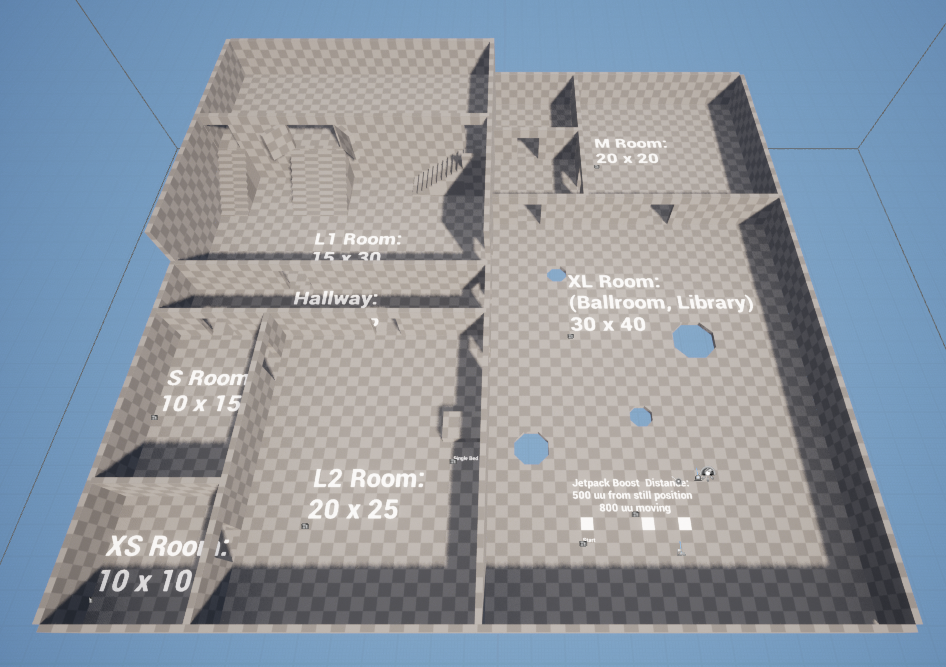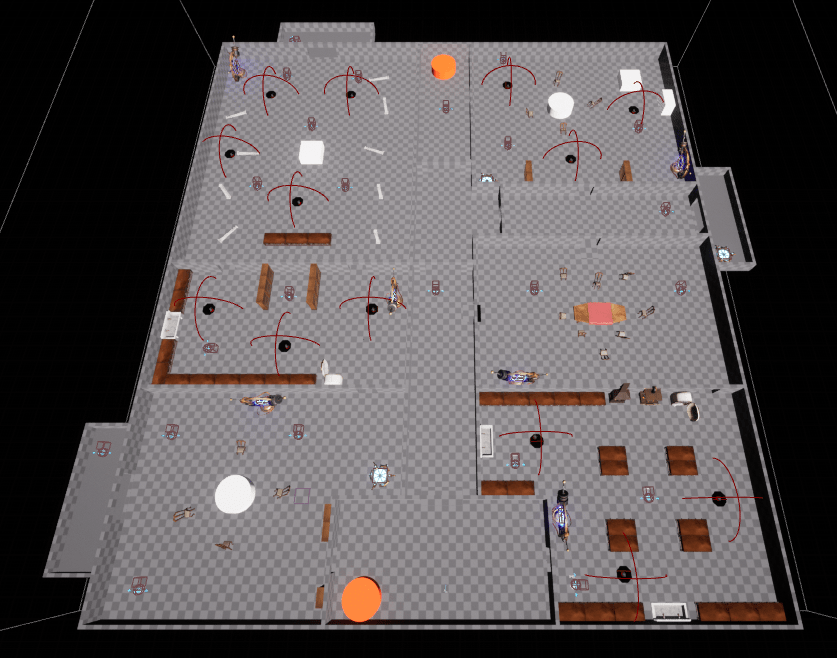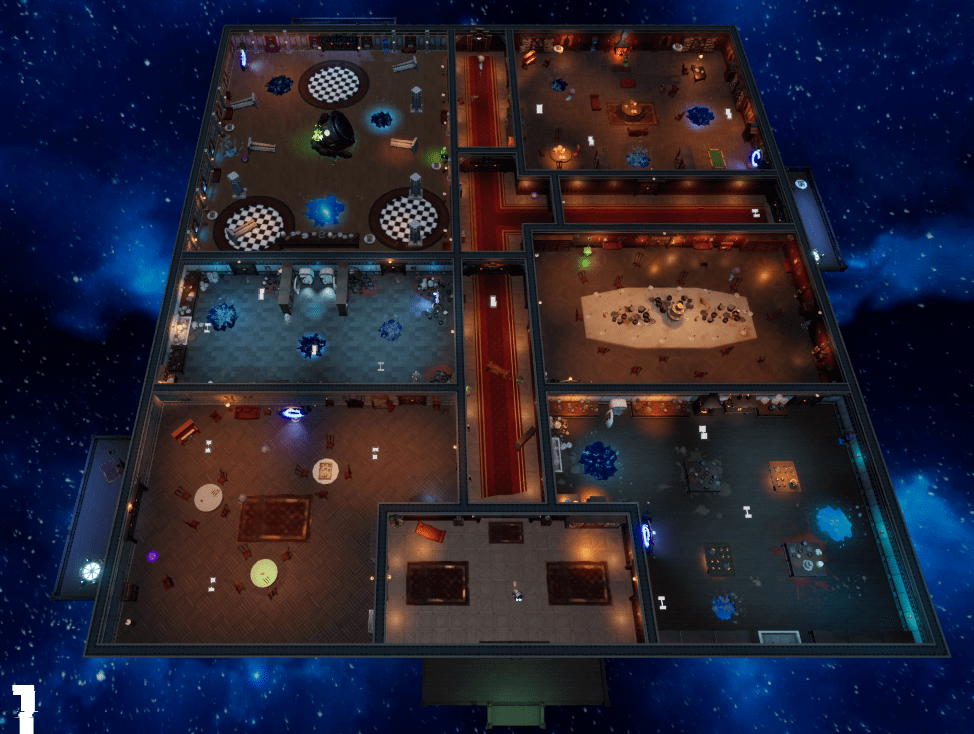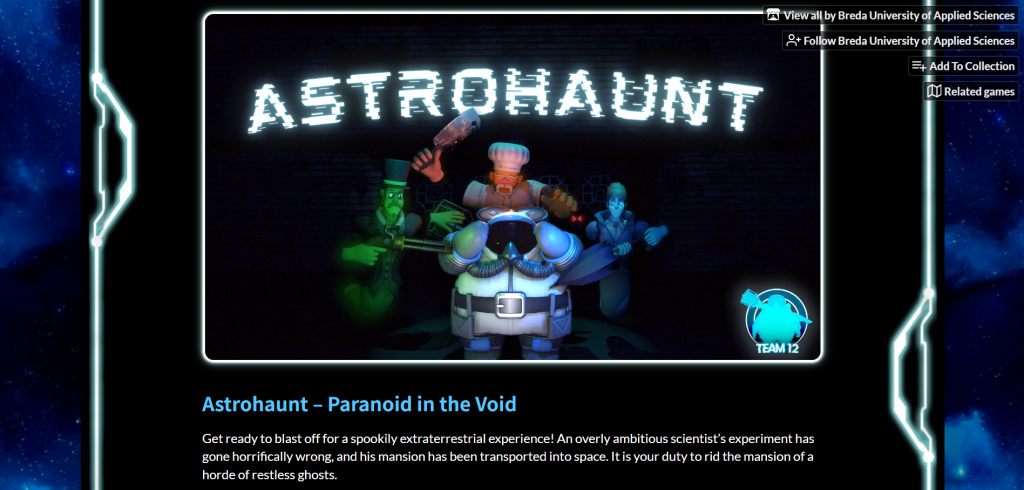Astrohaunt
Game & Level Designer
Astrohaunt is a top-down twinstick shooter based on the 80’s shoot ’em up game Paradroid. It was a student project during my first year of game design studies at BUas and it was made in Unreal Engine 5. I was a game and level designer for this project and had ownership of the first level.
12 People
Unreal Engine 5
2 Months
Overview
Astrohaunt
Project Constraints:
- Based on the 80’s shoot ’em up game Paradroid
- Character is a an astrohaunt
- Set in space
A scientist’s experiment gone wrong sends his mansion into space, teeming with ghosts. Your mission? Banish these spirits! Take over the different ghost’s powers to help you on your task: Boost your health, improve your weapon, and gain new powers by trapping the ghosts in a fast-paced and immersive minigame! Clear as many floors of the mansion as you can.
Workflow
Research
Researching the reference game: Paradroid
Player & Enemies
Designing the 3Cs and enemy and player abilities
Minigame
Designing the ghost trapping minigame
Gym Level
Testing 3Cs, player abilities, enemy attacks, and metrics
Level Sketch
Sketching enemy encounters and the level layout
Blockout
Grey-boxing the level based on the sketches
Set Dressing
Set dressing the level together with the artists
Playtest & Iterate
Playtesting and iterating on the level during blockout and set dressing phases
Release
Releasing the game on itch.io
Level Design
Level Design One Pager
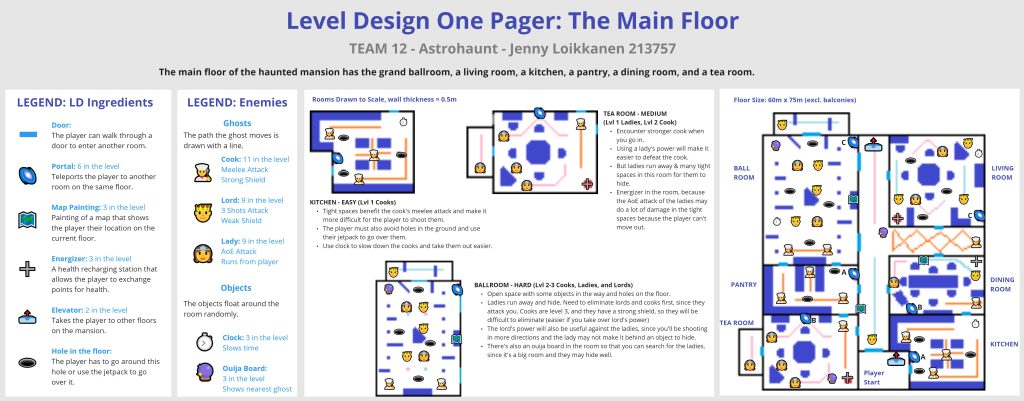
I designed the first level of the game which comes after the initial tutorial on how to play the game. This included planning the:
- Level layout and rooms to reflect a Victorian mansion
- Enemy encounters (enemy placement and AI patrol paths)
- Placement of pickup items that help the player
- Environmental challenges (placement of floor holes that hinder the player’s movement)
- Placement of cover objects
- Level flow and difficulty
Main Challenges
Fast-paced shooter
The game is very fast-paced, which meant that the rooms needed to be larger because the character moves at a high speed. There also needed to be large empty areas to play the minigame to trap the ghosts and gain their abilities.
At the same time, as a shooter, many cover options needed to be provided for the player to avoid the enemy attacks.
Combining these was a challenge, but with a lot of playtesting, I strived to have the right balance of cover and open areas in the level.
Open level layout
The level is fairly open with many different paths from room to room, so it was a challenge to implement difficulty progression, as the player has multiple options for which room to go to next.
To make the challenge increase throughout the level, the first rooms closest to the player start have mostly one enemy type per room, so that the player can learn how to approach these enemies without distractions, whereas the rooms furthest from the player start are the most difficult and have a combination of enemies from each room.
Playtesting & Iteration
I conducted several rounds of playtesting with both new and recurring players during the blockout and set-dressing phases to achieve the intended player experience.
I collected data by noting down observations and asking prepared questions. I then wrote a conclusion based on the data and wrote action points for improvements.
I playtested the following:
- Clarity and navigation through the level
- Difficulty of enemy encounters
- Minigame functionality in the level
Iterations were made to the spaces to improve the minigame functionality in the level, and balancing of enemies, pickup objects, and health stations to assure a smooth gameplay experience of the player with the intended difficulty curve.
Game Design
Enemy Design
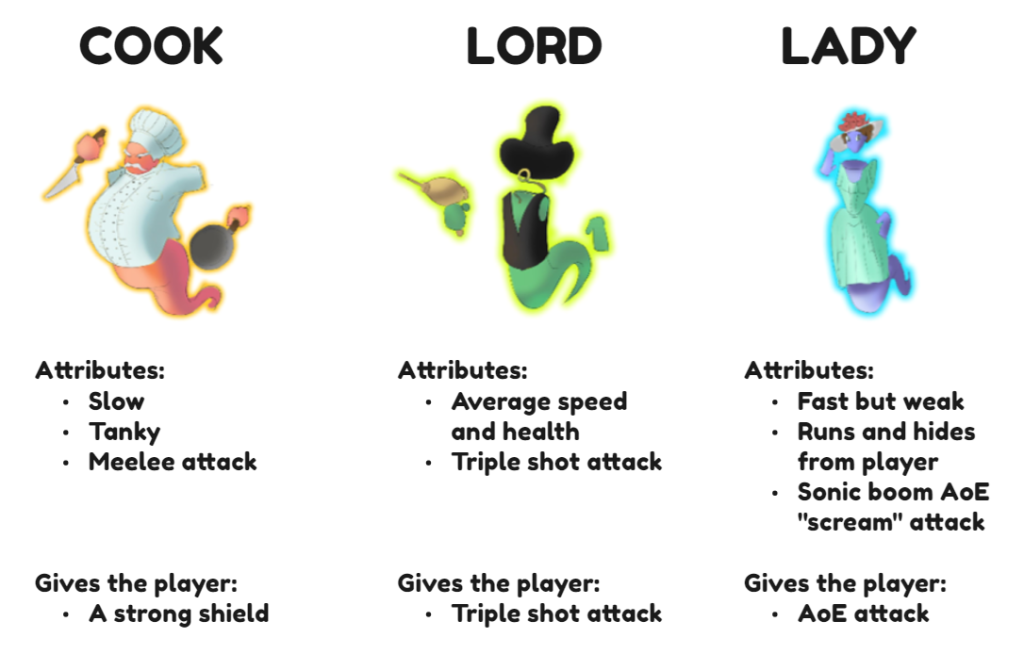
I designed the enemies of the game along with their abilities.
To fit the narrative of the game, I based the designs on characters that would’ve lived in a Victorian mansion: a lord, a lady, and a cook.
Each enemy needed a different attack to keep the game interesting, and they needed to have different attributes for the player to inherit when gaining their powers.
Minigame Design

The original Paradroid game has a minigame that you need to beat in order to hack a vehicle and get their power.
I designed the minigame for ours, making it more immersive and feel like a part of the game instead of a separate UI screen.
When the player gets close to an enemy, they can attempt to trap them. This triggers a timed minigame, in which the player can place trapping devices around the ghost. If the player succeeds, they win the minigame and gain the ghost’s power.
Result
Learning Outcome
My main learning outcomes for this project were:
- How to go through the entire level design process from concept to release.
- Designing a non-linear level.
- Balancing the difficulty of the level through playtesting and iteration.
- Designing different types of enemies that make the gameplay experience interesting.
- Working with constraints to make a game that adheres to them.
